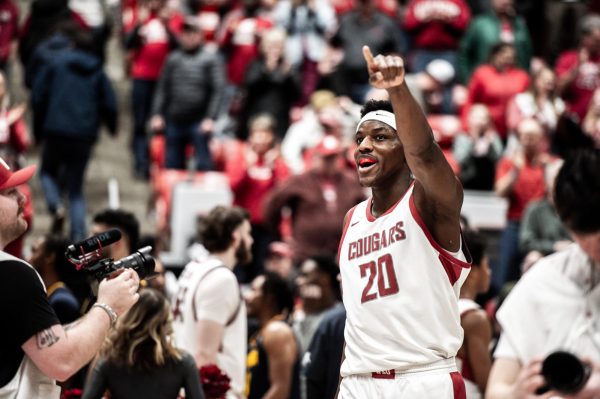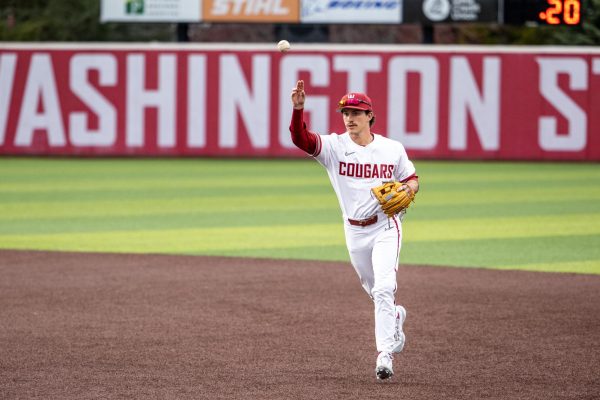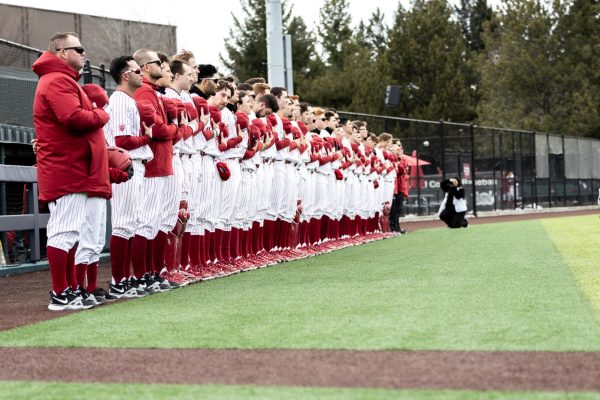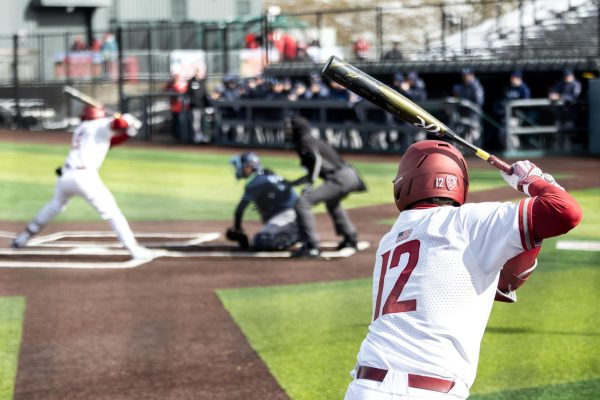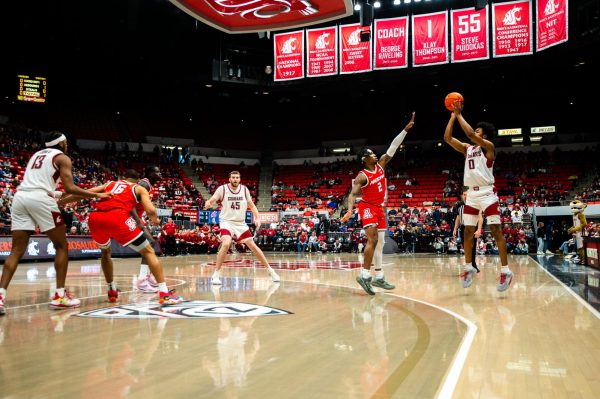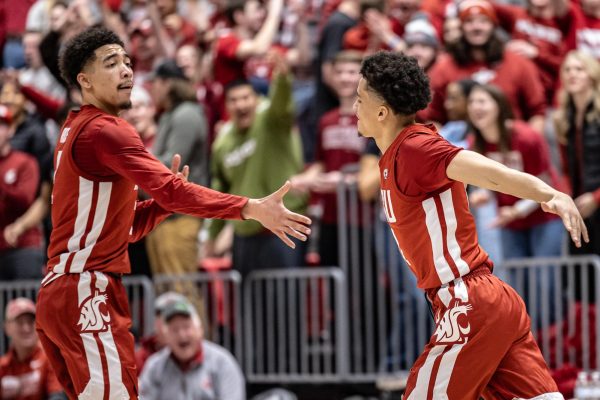Cream of the crop: WSU running backs reign supreme in Pac -12
April 30, 2014
Global warming doesn’t exist, it takes two seconds for a quarterback to spike a ball, and the Cougars don’t have good running backs.
Yes, these are all myths, and yes, there are people out there who believe in them – especially the referees from the ‘97 Rose Bowl.
Kyle Bonagura of ESPN for example, stated in his 2014 Pac-12 running back preview, “Any discussion about the Cougars’ running game is tough to take seriously.”
In reality, anyone who doesn’t understand the way the Cougars use their running backs is tough to take seriously. From top to bottom, the Cougars’ group of running backs is one of the best in the conference. However, a lot of people don’t understand that just because WSU doesn’t hand the ball to their backs a lot, that doesn’t mean they aren’t an integral part of the offense.
The ignorant naysayers will cite the Cougars’ NCAA worst 53.4 rushing yards per game last year and 694 yards of total rushing. They’ll look at the team’s not so great 2.9 yards per carry average. But they’re lazy. They don’t understand.
They don’t understand that the Cougs’ 243 rushing attempts were by far the fewest in the country last year. They don’t understand that quarterback Connor Halliday was sacked 31 times last year, leading to negative 244 yards.
Those stats don’t matter. Yards per carry do, however, and last year, Teondray Caldwell averaged 5.4. For perspective, Arizona superstar Ka’Deem Carey also ran for 5.4 a play. That’s pretty good company. Each of WSU’s top four backs last year averaged more than 4.5 yards per carry, a very respectable number.
Marcus Mason was a tick behind Caldwell, averaging 4.9 yards a carry, but he also hauled in 52 receptions for 390 yards.
When Cougar running backs touched the ball last year, they were generally successful. No, they don’t get 25 or 30 touches a game like a Ka’Deem Carey or a Bishop Sankey would, but this group truly is a unit, and should be assessed as one. Caldwell and Mason combining for 96 yards on 13 carries against Auburn last season (a team that just so happened to play in the national championship), is just as important as one marquee name from a UCLA or Oregon doing the same thing.
Additionally, the tandem of Marcus Mason and Teondray Caldwell from last year is sure to be bolstered this year with Jamal Morrow and Theron West, whom we saw break out in the New Mexico Bowl with three receptions for 50 yards. In the spring game last Saturday, Morrow rushed for 44 yards on five carries, an average of 8.8 yards a carry.
It will be a pretty competitive group, with four capable players in the rotation at running back. Looking around the conference, that’s more than a lot of other teams can say (with the exception of Oregon).
Stanford lost Tyler Gaffney, and Carey and Sankey are gone from their respective schools, so a lot of teams will be featuring unproven names in their backfield next year.
Teams like Stanford, UCLA and USC that are known for their running backs will surely do just fine with the next man up, but with the experience of Caldwell, Mason and West — Mason and West will be seniors, and Caldwell has two years of experience — I’m taking the Cougars’ backs over just about everyone else’s in the conference.
— Beau Baily is a junior communication major from Puyallup. He can be contacted at 335-1140 or by [email protected]. The opinions expressed in this column are not necessarily those of the staff of The Daily Evergreen or those of Student Publications.











